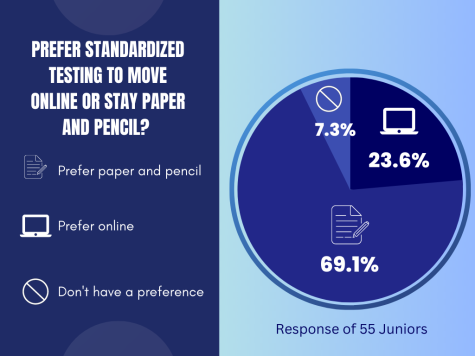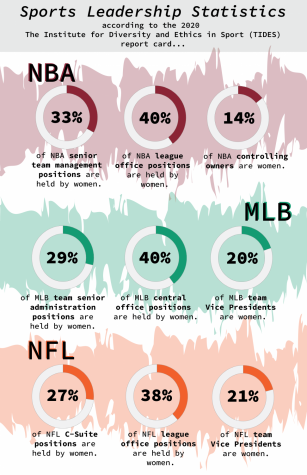Following Ginsburg’s Death, Trump Announces Conservative Nominee
Supreme Court Justice Ruth Bader Ginsburg — a legal and cultural icon who fought for civil rights throughout her career — passed away in mid-September. A little more than a week after her death, President Donald Trump announced conservative Judge Amy Coney Barrett as his Supreme Court nominee.
The Senate, which must confirm Barrett’s nomination, has a Republican majority of 53-47.
Senior Georgia Filler, a member of Advocats, a club focused on gender inequality, expressed that the appointment of a conservative justice — in place of a liberal one — could alter the trajectory of court decisions on many issues for generations to come, such as abortion.
Her fellow Advocats member, senior Ally Hardy, agrees: “I just feel like it’s being pushed very quickly,” she said, noting that President Trump has already appointed two Supreme Court justices.
Dennis Duffy, a social studies teacher and former lawyer, noted that historically, the balance of the court has changed over time.
“I’m not particularly concerned one way or the other about Amy Coney Barrett because it’s part of the ebb and flow of American politics,” Mr. Duffy said. “There was a…majority on the liberal wing of the court through several decades. Then it became a soft 5-4 conservative majority…and now…on certain issues there’ll be 6-3, and other issues it’ll be 5-4, because of the beliefs of each of the Supreme Court justices.”
In 2016, following the death of Supreme Court Justice Antonin Scalia, Senate majority leader Mitch McConnell refused to hold a vote to confirm President Obama’s nomination for Supreme Court on the grounds that waiting until after the presidential election would allow voters to voice their opinion on the type of justice they wanted. Now, during another election year, McConnell and Trump have made it clear they intend to push for Barrett’s confirmation before the November election.
This would go against Ginsburg’s preference, according to her granddaughter Clara Spera, who told Politico that, before her death, Ginsburg said, “My most fervent wish is that I will not be replaced until a new president is installed.”
Ginsburg began a lifetime of fighting for civil rights at a time when laws barred women from jobs, rights and educational opportunities.
After graduating from Cornell, Ruth Bader Ginsburg moved with her husband, Martin Ginsburg, to Fort Sill, Oklahoma, for his military service. According to an article from The New York Times, she was offered a position at the Civil Service rank of GS-5 as a claims examiner, but the offer was withdrawn when she announced she was pregnant; she ended up working for lower pay as a clerk-typist at the level of GS-2.
She then went to Harvard Law School, transferred to Columbia and graduated top of her class. Ginsburg credited Columbia law professor Gerald Gunther for helping her to get a clerkship in New York when most law firms still refused to hire women.
From 1963 to 1972 Ginsburg taught at Rutgers Law School, where she began fighting gender discrimination. In 1972 she took her first case, Moritz v. Commissioner, advocating that both genders should have equal rights to take out IRS tax deductions. The case was a success that “cast a cloud of unconstitutionality” over hundreds of other federal statutes, which Ruth Bader Ginsburg then litigated to overturn in the next decade, according to Martin Ginsburg in a 1993 NPR Interview.

“I have a 30-year-old daughter… who is a doctor in Chicago,” Mr. Duffy said. “There is no question that she has the ability to serve as a physician to her patients at Cook County because of the work that RBG and others did on behalf of the class of women in the workforce.”
Ginsburg was named to the U.S. Court of Appeals for the District of Columbia Circuit by President Jimmy Carter in 1980 and became the second woman to be appointed to the Supreme Court following her nomination by President Bill Clinton in 1993.
In 1996, she wrote the Supreme Court’s majority opinion in United States v. Virginia, which said the all-male Virginia Military Institute could no longer deny admission on the basis of gender, helping to pave the way for women in higher education.
“As a woman myself, it’s very important to me that as I grow up, I am able to rise in the ranks as much as men are…and [that] every woman is treated as equal,” Filler said. “She made it more accessible for women to serve on juries, and she made it possible for them to open bank accounts, and just kinda live an independent life.”
Following the retirement of Supreme Court Justice Sandra Day O’Connor, also liberal, in 2006, Ginsburg dissented more often and more strongly, especially in favor of women’s rights, while maintaining a close friendship with conservative Justice Antonin Scalia.
“I do think that I was born under a very bright star,” Ginsburg said in a 2019 NPR interview. “Because if you think about my life, I get out of law school. I have top grades. No law firm in the city of New York will hire me. I end up teaching; it gave me time to devote to the movement for evening out the rights of women and men.”
Photo captions by Natalie Isberg



















